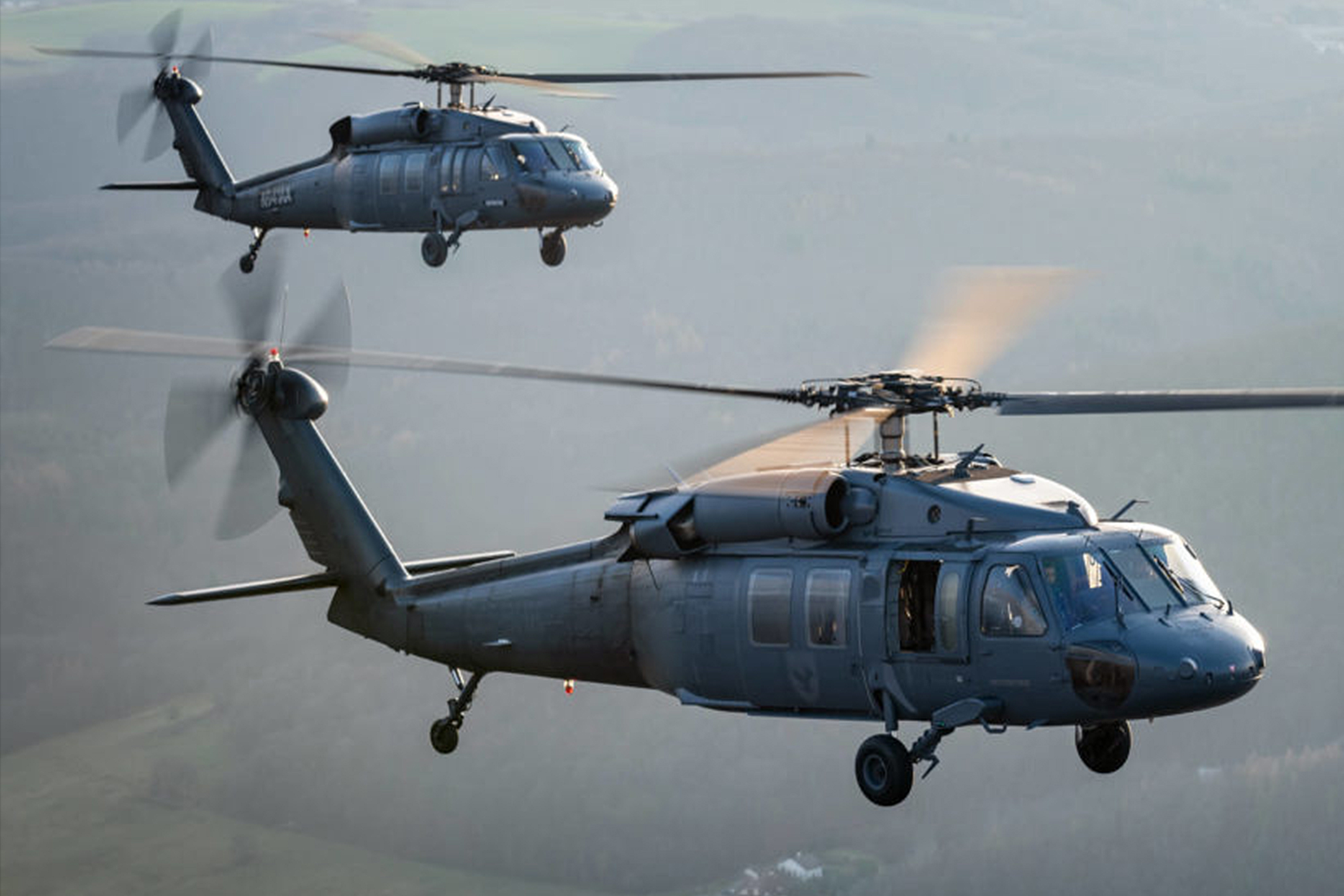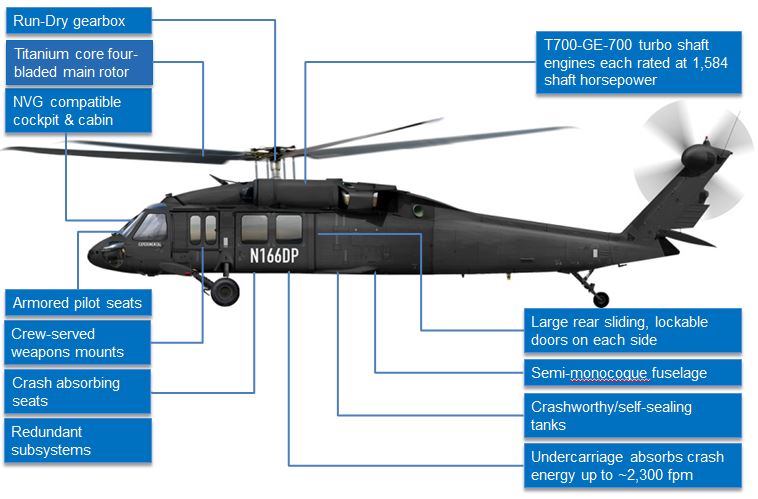The Future of the UH 60: Innovations and Upgrades for Enhanced Performance
Vital Facts and Insights Concerning the UH-60 Helicopter
The UH-60 helicopter, a foundation of contemporary armed forces air travel, has actually evolved significantly because its introduction in 1979. Understanding the intricacies of the UH-60's role exposes a complicated narrative of innovation and adaptation that merits even more exploration.
History of the UH-60
The UH-60 Black Hawk helicopter was developed in the late 1970s as component of the USA Military's effort to change the older UH-1 Iroquois. The demand for a much more versatile, sturdy, and qualified aircraft developed from the lessons discovered during the Vietnam War, where the restrictions of the UH-1 ended up being evident. In 1972, the Military launched a program to obtain a brand-new utility helicopter, culminating in an affordable layout phase that saw numerous makers submit propositions.
Sikorsky Aircraft was eventually granted the contract in 1976, and the very first prototype of the Black Hawk took trip in 1974. Its design concentrated on sophisticated innovation, including a four-blade blades system and a modular building and construction that enabled for rapid field maintenance and flexibility to different goals. Officially entering service in 1979, the UH-60 quickly came to be the backbone of Military aviation, serving in a plethora of roles such as army transport, medevac, and logistical assistance.
Over the years, the Black Hawk has undertaken different upgrades and alterations, solidifying its standing as a necessary possession in military procedures around the globe (UH 60). Its robust efficiency continues to fulfill the progressing needs of contemporary war
Design and Attributes
Including advanced engineering principles, the UH-60 Black Hawk includes a streamlined, wind resistant design that enhances its performance and effectiveness. This twin-engine utility helicopter is characterized by its unique silhouette, with a high-mounted, four-blade main rotor system that offers extraordinary lift and security. The rotor blades are built from composite materials, adding to their resilience and decreasing maintenance needs.
The body is developed for optimal weight distribution and architectural honesty, allowing for a maximum gross weight of approximately 22,000 pounds. The cabin design assists in adaptable setups, fitting different missions, from army transportation to medevac operations. Furthermore, the cabin is equipped with sophisticated avionics, including digital display screens and multi-functional systems that boost situational recognition.
The UH-60 likewise integrates composite materials in its airframe, which reduce radar cross-section and boost survivability in aggressive atmospheres. Its retracting touchdown equipment enhances the airplane's profile, more contributing to its wind resistant performance. On the whole, the thoughtful combination of style aspects and products not just enhances the Black Hawk's operational capacities yet likewise makes certain that it stays a crucial asset for goals across diverse terrains and problems.
Functional Capabilities


The UH-60 is equipped with innovative avionics and navigating systems, facilitating operations in tough climate problems and low visibility situations. Its durable style enables it to perform in severe and high-altitude temperature conditions, further expanding its functional variety. The helicopter's twin-engine configuration offers redundancy and improved performance, making certain dependability during crucial missions.
Outfitted with sophisticated communication systems, the Black Hawk boosts situational understanding and coordination amongst armed forces units. In addition, its ability to perform aerial reconnaissance and assistance close air assistance goals highlights its integral function on the battleground. Overall, the UH-60 visit this site right here Black Hawk's functional capacities are a testimony to its importance in modern armed forces aeronautics, successfully meeting the needs of a rapidly progressing operational landscape.

Adjustments and variations
Different variations and modifications of the UH-60 Black Hawk have been developed to meet specific goal needs and boost its functional convenience. One of the most remarkable version is the UH-60L, which presented upgraded engines, enhanced avionics, and improved cargo capacity. In addition, the UH-60M alternative functions progressed electronic avionics, an extra powerful engine, and improved survivability systems, making it ideal for a broader variety of goals.
The HH-60G Lead Hawk is one more specialized variant, made for search and rescue procedures. It is geared up with sophisticated navigation systems, exterior fuel containers, and medical emptying capacities. Similarly, the MH-60R Seahawk is optimized for anti-submarine war and maritime operations, boasting innovative radar and sonar systems.
Additionally, the armed variants, such as the AH-60, are changed for straight attack duties, featuring tool systems like rockets and gatling gun. The UH-60's adaptability is more showcased in its ability to be fitted with mission-specific tools, including freight hooks for transport, troop transportation interiors, and reconnaissance sensing units.
These variants and alterations highlight the Black Hawk's important duty in modern armed forces procedures, showcasing its capacity to adapt to evolving objective needs.
Role in Good Samaritan Initiatives
The UH-60 Black Hawk has actually stepped up to play a critical role in altruistic initiatives around the globe, showing its adaptability past military applications. This multi-mission helicopter is furnished to perform a variety of objectives, including clinical discharges, disaster relief, and logistical support in tough this post atmospheres.
Throughout natural catastrophes, such as storms and quakes, the Black Hawk has actually verified important for transporting relief materials and workers to influenced locations. Its capability to run in ascetic problems allows it to reach remote locations that may be hard to reach by ground transportation, guaranteeing timely help to those in demand.
In Addition, the UH-60 is frequently utilized for medical emptying objectives, swiftly carrying hurt individuals to medical facilities. Its innovative clinical capacities, consisting of space for medical personnel and devices, make it possible for life-saving treatments during important scenarios.
In global procedures, the Black Hawk often works together with humanitarian companies, showcasing its flexibility and integrity. By leveraging its capabilities, the view it UH-60 not only sustains army objectives yet additionally plays an important role in relieving and conserving lives suffering throughout humanitarian situations worldwide.
Conclusion
The UH-60 helicopter has actually developed itself as an important possession in military procedures given that its intro, defined by its robust layout and functional capabilities. Its various arrangements deal with a wide variety of objectives, from army transport to clinical discharge. Furthermore, the UH-60's contributions extend beyond fight, playing a substantial function in altruistic efforts worldwide. The ongoing advancement of this aircraft emphasizes its significance in modern-day aeronautics and its versatility to meet diverse functional demands.
The UH-60 Black Hawk helicopter was established in the late 1970s as part of the United States Military's initiative to change the older UH-1 Iroquois.Including advanced engineering concepts, the UH-60 Black Hawk includes a smooth, aerodynamic style that enhances its performance and efficiency.Optimized design and progressed design permit the UH-60 Black Hawk to stand out in a variety of functional duties. On the whole, the UH-60 Black Hawk's operational abilities are a testament to its relevance in contemporary military air travel, properly satisfying the demands of a rapidly progressing operational landscape.
Different variations and adjustments of the UH-60 Black Hawk have been created to fulfill particular objective demands and boost its operational flexibility.